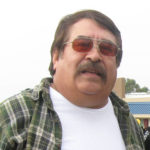
By Jesse C. Gonzales

“In the beginning…God,” to those who follow Judeo, Christian and Islamic beliefs, that passage is an introduction to the answers that can satisfy many questions concerning what the purpose of our existence is. In a certain sense, it can serve to cool the ardor that burns in the inquisitive; as to what our intended role in the world, according to GOD should be. According to the various sacred texts, whenever questions arise regarding the origin and purpose of man; or questions concerning the state and order of things in the universe, the ultimate answer must be the great, I AM.
No one is exactly certain how many centuries Mesopotamia was believed to be the origin of these three major religions that slowly spread westward. Some research clearly indicates that strong parallels exist between western and eastern religious beliefs. A growing argument among scholars is the extent of influence that ancient Hindu texts had on western religious development. In some texts, I AM is a reference to GOD himself; while others suggest, I AM, refers to man, GOD’s creation. However, in all religions whether western, eastern or far eastern, is the parallel or connectivity between GOD, man, and the cosmos present. Needless to say, that those ancient thinkers spent a great deal of their time looking up at the sky; in awe of the heavenly bodies, perhaps trying to make sense of it all. Unknown to them, on the other side of the world, extensive study of man’s purpose and his relationship with the gods, precise mapping of the cosmos, and keeping of time, had already become a way of life for entire civilizations. Increasing research favors the theory that the knowledge and understanding of ancient civilizations in these areas surpasses that of Greece, Babylon and Egypt.
From the Tlingit in the far north to the Inca in the distant south, ancient indigenous cultures have venerated the Earth (Mother) and worshiped the Universe (Father). The concept of worship to the early and present Native Americans is still somewhat and perhaps will always be misunderstood. For the most part, the Eurocentric mentality and concept of measuring time by chronological linear events is a contributing factor to this dilemma. To the early European mind any opposing viewpoints that would challenge established thinking of the cosmos, creation, his ecology, and the natural relationship of man to all three, were considered heresy. Thus ancient libraries in early American Indian cultural centers including texts written in great detail over several millenniums were destroyed, and entire cultures killed or enslaved.
For the first Americans the concept of circles to interpret life cycles, season changes, day and night, rotation of the earth including the celestial bodies was to live in natural order. Thus, they did not practice religious traditions and beliefs such as their European counterparts; they lived and conscientiously interacted with their belief system. European religious concept at that time was much likened to a modern day window shopper who looks through the window of a store but never enters. Quite the opposite since the earliest time, ancient American cultures sought an intimate connectivity with the cosmos and dared to enter. So much was this desire to understand and connect with the heavens that simple villages and entire cities were laid out to model the celestial patterns of stars and planets. In his book Ancient Cities, Gene S. Stuart (1988) writes that there is every reason to believe the builders or planners used a well-developed blend of rudimentary astronomy and geometry in planning their cities (p. 35). It is arguably believed by some new thinkers that these ancient astrologers found the answer to man’s question as to his place and relationship within the cosmos. To believe in something is not a difficult task; sustaining the belief is the challenge.
Like their early Judeo/Christian and Islamic ancestors, many modern “believers” are still window shopping, wondering where they fit in. They look at themselves and their relationship with the cosmos and the earth around them as being unique individual fingers on a hand, or single leaves on a branch. For the early indigenous inhabitants there was no consideration given to the differences of hand and finger; for them, according to the order of the cosmos, both hand and finger are one and the same. Expanding on this point of view, early Americans were content with being a part of the whole; and thus acknowledging this they lived in harmony with the earth below and with the sky above. Indeed, indigenous man learned early that he, along with everything created, is the great “I AM.”
*****
Jesse C. Gonzales is a longtime resident of the Central Valley. He has been actively involved in social issues since “Johnny” Kennedy was president. Contact him at jesse_c_gonzales@hotmail.com.
